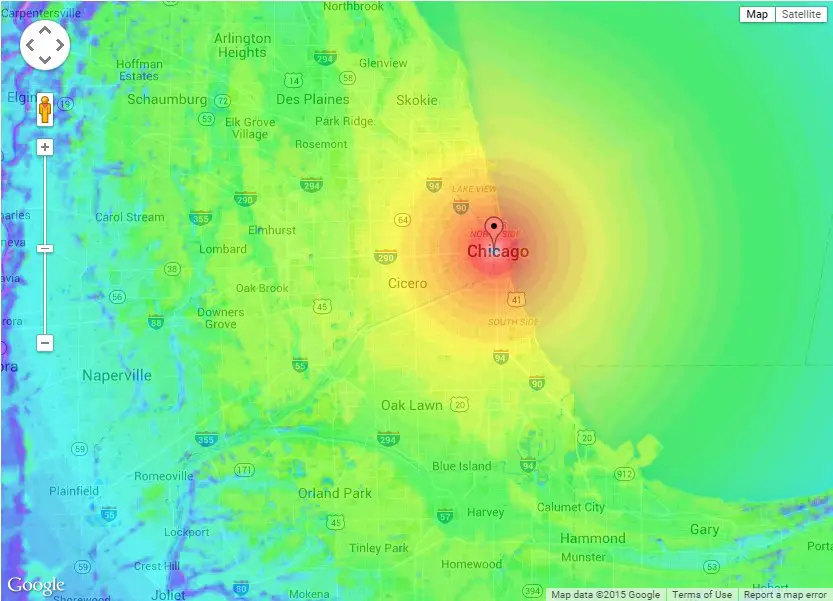

I wanted to take a moment to explain some of the factors affecting your TV reception so you can make some better estimates of how many channels you’ll be able to get with an antenna, and how you can improve your reception.
In an ideal flat world, TV signals would radiate in a perfect circle outward from the source, like ripples of water in a still pond. The strength of the signal would just depend on how far you were from the transmitter.
But, the real world can be bumpy with all kinds of hills, mountains, and valleys. I did some analysis using an online tool at the TVFool.com website to determine how much effect these terrain features have on your TV signal. The answer is that they have a huge effect!
First, let’s take a look at a super flat area like Houston, TX which is the ideal case:
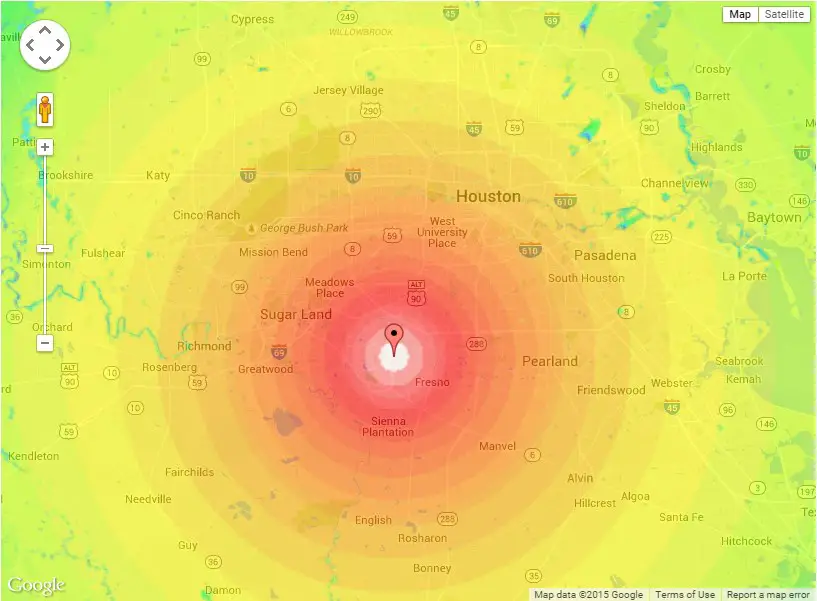

The colors indicate how strong the TV signal is, from white to red to green to blue and purple. Note how the signal radiates in an almost perfect circular “target” pattern when the land is flat.
Okay, Houston is an ideal case. Let’s take a look at some whacky terrain and see what effect it has on the signals. Check out Boston, MA:
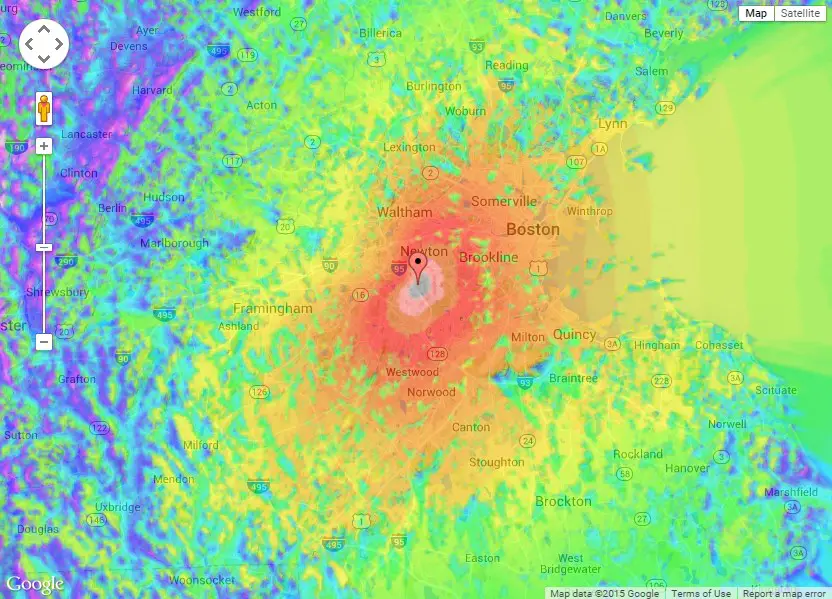
Boston has some mild hills, and you can already see that the perfect circular pattern is very distorted, and that there are little valleys where the TV signal is weak. If you happen to live in one of these valleys, your reception will be poor.
Next, let’s take a look at my home town of Los Angeles, CA, which lies in the basin between some fairly large mountains and a really crazy pattern:
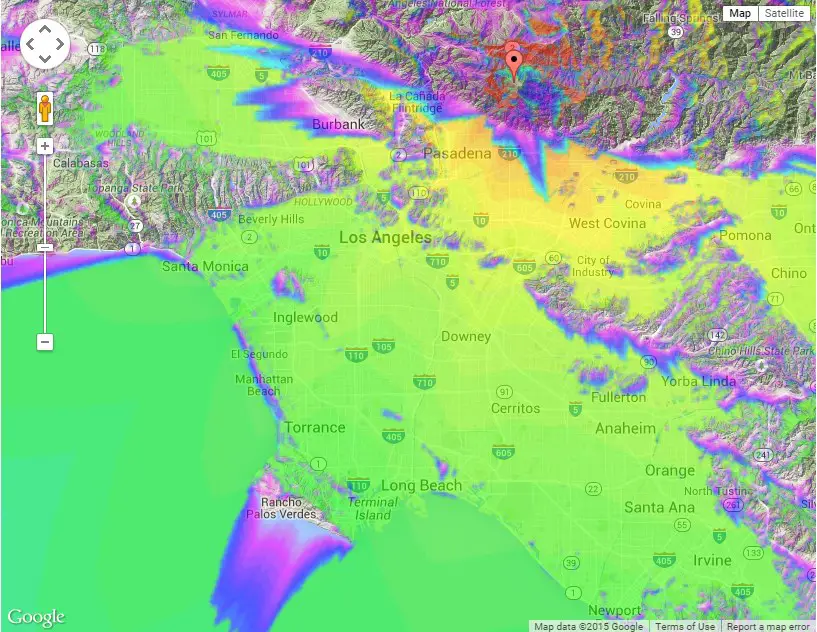
You can clearly see that the signal is pretty much stopped in its tracks to the north, where the mountains are. Also, you can see purple “shadows” where the smaller mountains are blocking the signal. Interestingly, there is a “shadow” just to the south of the transmitter where the mountain itself blocking the signal. In that area, the people live only a few miles from the transmitter, but are getting a very weak signal!
Let’s take a look at San Francisco now:
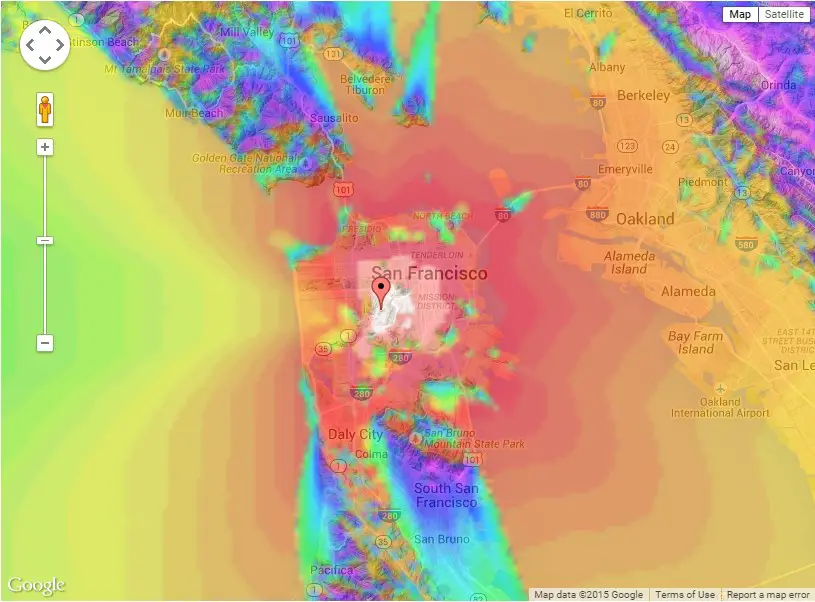
This shows another crazy pattern. The transmitter is located on the famous Sutro Tower on Twin Peaks. If you have a line of sight to the tower, you’re in good shape, even if you’re way across the bay in Oakland or even Berkeley. But, if you live in South San Francisco, you’re screwed because mountains are blocking the signal.
These maps show how much terrain affects TV signals. Even if you’re really close to a transmitter, if you are in the “shadow” of a mountain or hill, your signal might be weak.
On the other hand, if you live in a flat area with nothing blocking the signals (like across a span of water), you might be able to get good TV reception even from very far away.
As informative as these maps are, however, they are limited because they do not take into account buildings, trees, and other features that might block your signals. New York City looks great “on paper”, but if a skyscraper is between you and the TV tower, you could be in bad shape.
This is why it’s so hard to predict how many channels you’ll be able to get. Someone who is 70 miles away might get better reception than someone who is 10 miles away, due to the terrain or objects blocking the signal.
You can use this tool to check any station in your area. Find the call letters of the station you want to check. If you don’t know them off hand, go to the Station Finder, or Antennas Direct’s Transmitter Locator and enter your location to see a list of stations and their call letters.
Next, go to TV Fool’s Online Coverage Map Browser Tool and enter the call letters of the station. Click “Search”, and a colored “heat map” will appear showing signal strength. You can zoom in to find your exact location.
The colors in the map will tell you what kind of antenna you need. White is the strongest, then red, then, orange, then yellow, then green, then blue, then purple.
If you are in a green or stronger area, you should be able to receive that channel with a good indoor antenna like the Mohu Leaf.
If you are in a blue area, you should be able to receive that channel with an attic or roof antenna.
Anything further out – you might be able to get with a roof antenna, but no promises!

One caveat is that VHF signals are more difficult to receive (by most HD TV antennas) than UHF signals. So, even if a VHF station is “green”, you might not be able to receive it with an indoor antenna.
Another factor you’ll have to consider is whether the TV signals in your area are all coming from the same direction or from different directions. In Los Angeles, all of the TV signals come from Mt. Wilson, so I can use a unidirectional antenna pointed in that direction. If the signals are coming from different directions in your area, you’ll want to use an antenna that is more omnidirectional. I’ll talk more about this in a future article. For now, the Mohu Leaf does a pretty good job of receiving signals from different directions, although most antennas are somewhat directional, including the Leaf.
These maps show how important it is to have a direct line of sight to the transmitter. Any objects in the way will literally cast a shadow where the TV signals are weak.
The way to somewhat improve this situation is to put your antenna up as high as possible. The second floor is better than the first. The attic is even better. The roof, even better. Of course, if you have a 10,000-foot mountain in the way, putting your antenna on the roof probably won’t help, but you can make the call based on the coverage map and the obstacles in your immediate area, whether it’s worth the effort or not.
Another super important thing you can do based on these maps is to point your antenna towards the transmitter tower. Figure out the compass direction and point your antenna accordingly. If you need to run a longer cable in order to do that, it can be well worth it. You want to have the antenna on the side of your house that faces the signals.
An amplified antenna might help if all of your signals are far away. If some are close and some are far, it can actually hurt your overall reception, because the stronger signals will swamp your amplifier and drown out the weak signals.
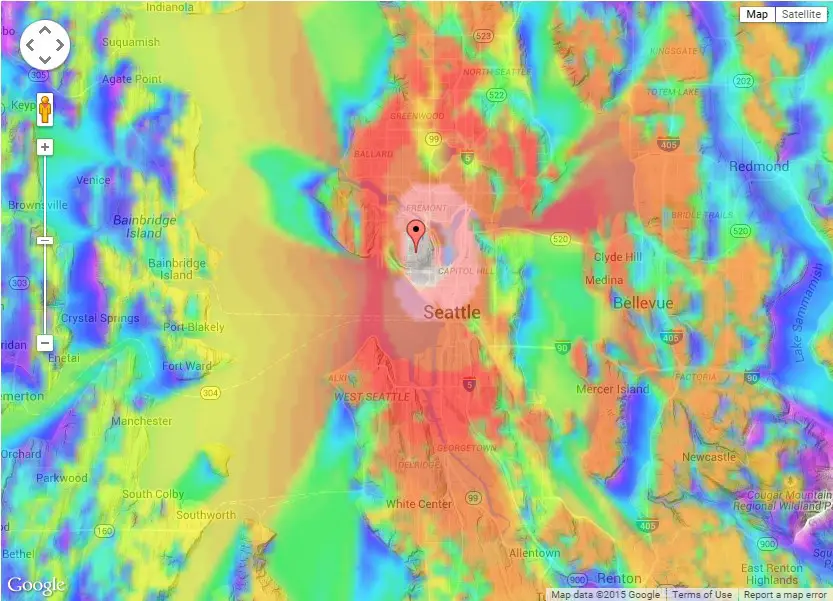
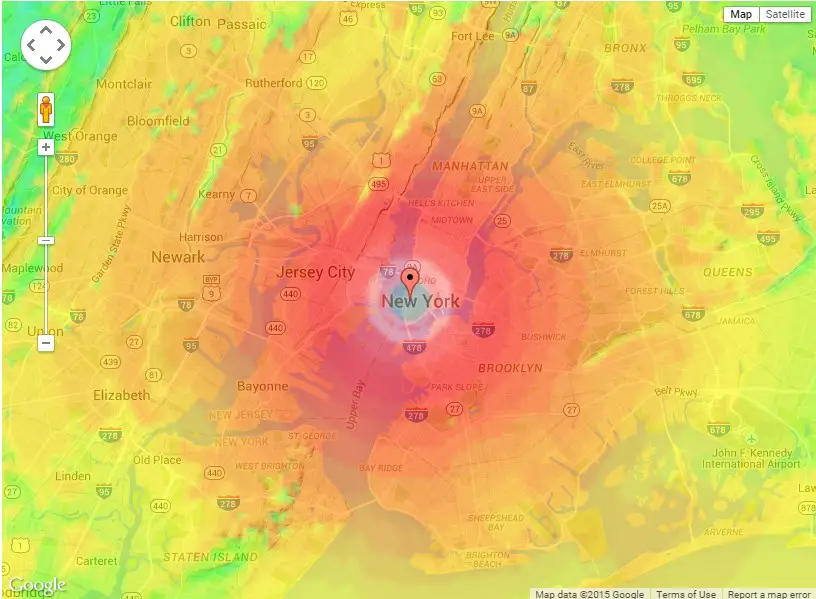
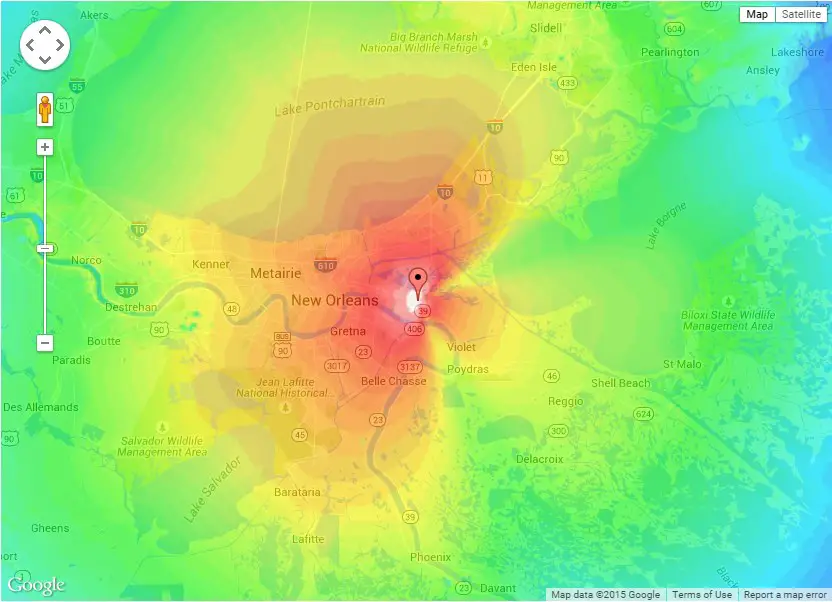
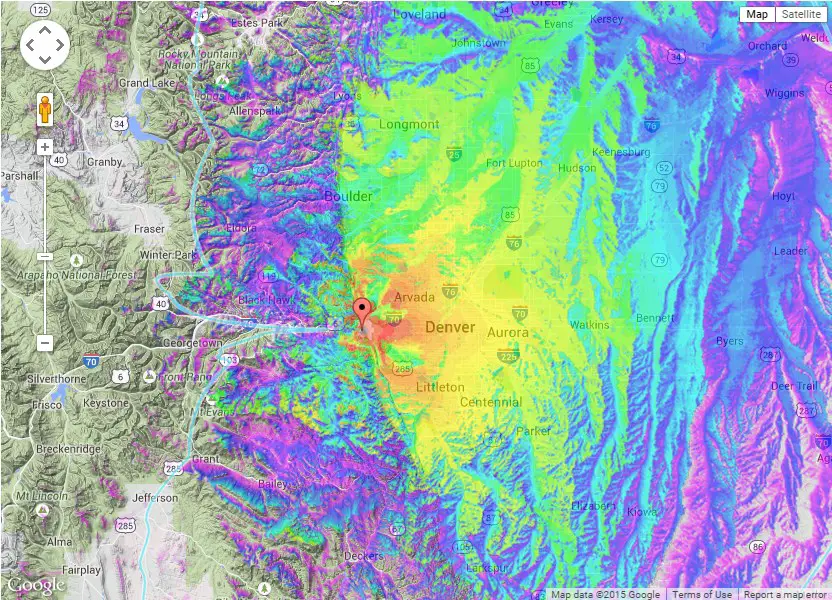






I hope these maps have helped you understand how much of an effect terrain and other obstacles can have on your TV reception. Here is the full list of cities that I looked at:
Please feel free to post the map of YOUR area below, and let us know how many channels you are getting! – Brian